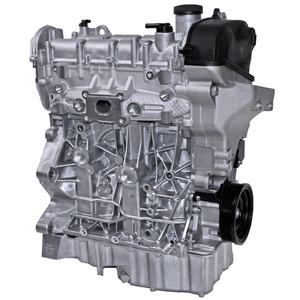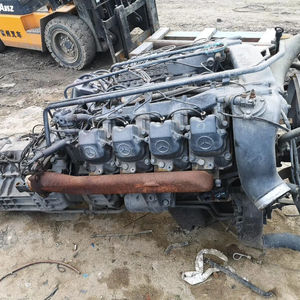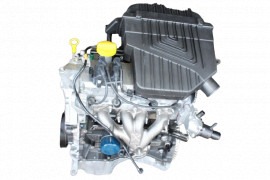Discovering the Inner Functions of a Compact Automobile's Engine System
As vehicle drivers, we commonly take for granted the complex processes that take place within the confines of our automobile's engine system. In this exploration of a small vehicle's engine system, we will untangle the inner operations of this mechanical symphony, dropping light on the mysteries that drive us ahead on our day-to-day journeys.
Burning Refine Summary
The burning process in a small lorry's engine system is a vital device that efficiently transforms gas into energy to power the lorry. This process happens within the burning chamber of the engine, where fuel and air mix, fire up, and generate regulated explosions. The burning procedure contains four primary phases: intake, compression, power, and exhaust.
During the intake phase, the piston moves downward, attracting in a mix of air and gas into the burning chamber. This downward motion produces the power required to drive the lorry. This cyclic burning procedure is basic to the operation of a portable vehicle's engine system, ensuring effective power conversion for propulsion.
Piston and Cylinder Communication

The piston's accurate fit within the cylinder is vital for keeping ideal compression and preventing energy loss during combustion. Limited clearances between the piston and cylinder wall surfaces make certain efficient sealing, allowing the piston to move smoothly without enabling gases to leak past. Appropriate lubrication is additionally important to decrease friction and wear in between these components, enhancing durability and performance.
Furthermore, the layout and products utilized in making the piston and cylinder effect engine performance and longevity. Modern engines frequently utilize lightweight yet durable materials like aluminum alloys for pistons and cyndrical tube liners to minimize inertia and boost thermal efficiency. Overall, the harmonious communication in between the piston and cyndrical tube is fundamental to the engine's functionality and general efficiency.
Gas Shot System Capability
Gas shot systems in small lorry engines play a crucial role in precisely providing gas to the combustion chamber for reliable and regulated ignition. The gas shot system works by infusing gas right into the combustion chamber at the optimal minute throughout the engine's procedure (opel corsa engine). This precise timing guarantees that the fuel mixes uniformly with the air for appropriate combustion, resulting in improved fuel efficiency and decreased discharges
There are mainly two types of gas shot see here systems made use of in portable automobile engines: port fuel injection (PFI) and straight fuel injection (DFI) PFI systems inject gas right into the intake port prior to the intake valve, while DFI systems infuse gas directly into the combustion chamber. Both systems have their benefits, with DFI using far better fuel atomization and PFI giving a more cost-effective remedy.
Understanding Engine Air Conditioning Mechanisms
Effective operation of a small car's engine counts heavily on the performance of its cooling devices. Engine air conditioning is vital to avoid overheating, which can lead to significant damages and lowered performance. The cooling system in a portable car commonly includes numerous elements functioning with each other to manage the engine temperature. One crucial part is the radiator, which utilizes coolant to absorb heat from the engine. As the hot coolant flows via the radiator, it releases warm into the air, cooling before going back to the engine. The water pump distributes the coolant with the engine and radiator, making certain a consistent flow to regulate temperature level. Furthermore, the thermostat helps control the coolant circulation to keep ideal engine temperature. Some automobiles also have cooling down fans that turn on when additional air conditioning is needed, such as during rush hour or heat. Comprehending these engine air conditioning devices is important for preserving the efficiency and durability of a portable lorry's engine address system.

Exhaust System Parts Explained
The ideal performance of a portable vehicle's engine air conditioning mechanisms depends on a corresponding system recognized as the exhaust system, which comprises different necessary parts for making sure efficient exhausts and engine performance. The exhaust manifold accumulates exhaust gases from the engine's cylinders and paths them to the catalytic converter.
One essential element of the exhaust system is the oxygen sensing unit, which checks the oxygen degrees in the exhaust gases to aid regulate fuel usage and make certain optimum engine efficiency. opel corsa engine. In addition, the resonator might exist in some exhaust systems to lower noise levels. Overall, the exhaust system plays a vital duty in preserving engine effectiveness, minimizing hazardous discharges, and making certain a quieter driving experience for portable car owners

Conclusion
To conclude, the portable vehicle's engine system is a complicated combination of elements that function together to help with the combustion process, convert gas into power, and expel waste gases. Comprehending the internal workings of the engine system, consisting of the piston and cyndrical tube interaction, gas shot system, engine air conditioning devices, and exhaust system elements, is vital for preserving ideal performance and efficiency of the car.
The combustion procedure in a portable automobile's engine system is an essential device that effectively converts fuel right into power to power the automobile.Fuel injection systems in portable automobile engines play an important function in precisely supplying gas to the combustion chamber for effective and controlled ignition.There are largely 2 types of fuel injection systems made use of in compact vehicle engines: port fuel shot (PFI) and straight gas injection (DFI) Recognizing these engine cooling systems is crucial for maintaining the performance and long life of a compact vehicle's engine system.
The optimal performance of a compact automobile's engine cooling systems depends on a complementary system understood as the exhaust system, which comprises various necessary parts for guaranteeing efficient official statement discharges and engine efficiency.